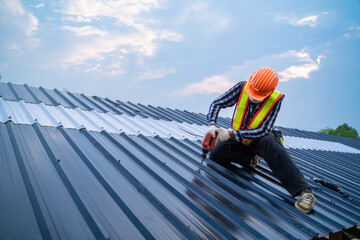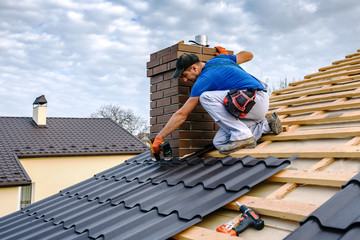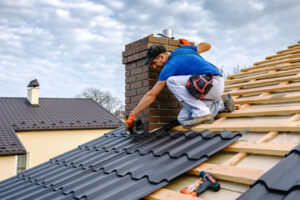When it comes to your home, consider the advantages of metal roofing. It is impermeability, resistance, and longevity make it an excellent choice for many reasons. It also contributes to the building envelope. Listed below are some of the benefits of metal roofing. Read on to learn more. Also, learn about the pros and cons of metal roofing for your home. After reading this article, you’ll be on your way to installing a metal roof on your home.

The best way to choose a metal roof is to consider your budget and the climate in your area. This type of roofing is an attractive option for a variety of homes. It requires less maintenance and has great longevity. Metal roofs are available in different materials, including shingles, slate, tile, and shakes. In addition, you can choose a metal roof that mimics other materials to achieve the look you’re after. Roofers offers the certification you’re looking for before you make a final decision.
One of the advantages of metal roofing over asphalt is its resistance to hail. Since steel is harder than asphalt, it fares better in hailstorms. Pea and dime-sized hail are rare, but large hail can destroy an asphalt shingle roof. If you own a metal home, consider getting homeowners insurance to cover the damage caused by a hailstorm. If you decide to go with metal roofing, it is important to research the pros and cons of each type to make sure you choose the right material.
Choosing the right materials for your roof is essential for its long-term health. When it comes to metal roofing, a high-quality waterproofing underlayment is essential to preventing leaks and protecting your home’s structure. It also helps reduce the likelihood of leaking due to improper installation. When you’re selecting a roofing contractor, be sure to ask about their warranties. A reputable contractor should offer a warranty that covers their labor for at least five years.
Manufacturers of high-performance paint systems that can reduce color degradation. Besides being durable, metal roofing also offers control over the color and the overall look of your home. In addition, you can choose from metallic or matte finishes. A metal roof’s color and appearance can be customized with various accessories and colors. If you are looking for an affordable and stylish roofing solution, you can start by deciding on the type of metal roof you’d like to install.
Another great feature of metal roofing is that it’s environmentally friendly. Depending on the type of metal you choose, it can be costly, but the energy savings you can expect will compensate for the initial investment cost. The only downside is that the installation process can sometimes result in denting, but you can avoid this by choosing a proper applicator. So, consider all the pros and cons of metal roofing and get the right roof for your home! You’ll be glad you did!
In addition to its durability, metal roofs don’t attract lightning. Lightning seeks out a path to the ground. When struck by lightning, it’s more likely to strike a tree or a telephone pole. Since metal roofs don’t provide an inherent path to the ground, there’s no scientific reason for them to attract lightning. Aside from being beautiful, metal roofs protect your home from natural disasters.
Metal roofs are an excellent option for many different types of structures. As long as you install a metal roof on your home, you can enjoy better energy efficiency. Additionally, metal roofs can improve the value of your home. They can raise your resale value by up to 6 percent in some areas. There are many advantages to metal roofing. Please find out the advantages and disadvantages of installing it in your home.
Non-structural metal roof panels are designed for buildings with steep pitches and transfer loads to the roof deck. They come in many styles, including standing seam, corrugated, and tile. They mimic the look of slate, wood, and clay tiles. Moreover, they are available in a variety of paint and aggregate finishes. You can choose the one that best suits your home and your budget. But remember, it’s not for everyone.

 There are many benefits to a flat roof, including its ability to reduce evaporation. This material is highly durable, so it is best to seek the services of a professional roofer. A properly-constructed roof will prevent the weather from compromising your home or business. And if you decide to go with a flat roof, you should consider the pros and cons of each type before making the final decision. Roofing materials are not only functional, but they are also attractive.
There are many benefits to a flat roof, including its ability to reduce evaporation. This material is highly durable, so it is best to seek the services of a professional roofer. A properly-constructed roof will prevent the weather from compromising your home or business. And if you decide to go with a flat roof, you should consider the pros and cons of each type before making the final decision. Roofing materials are not only functional, but they are also attractive.